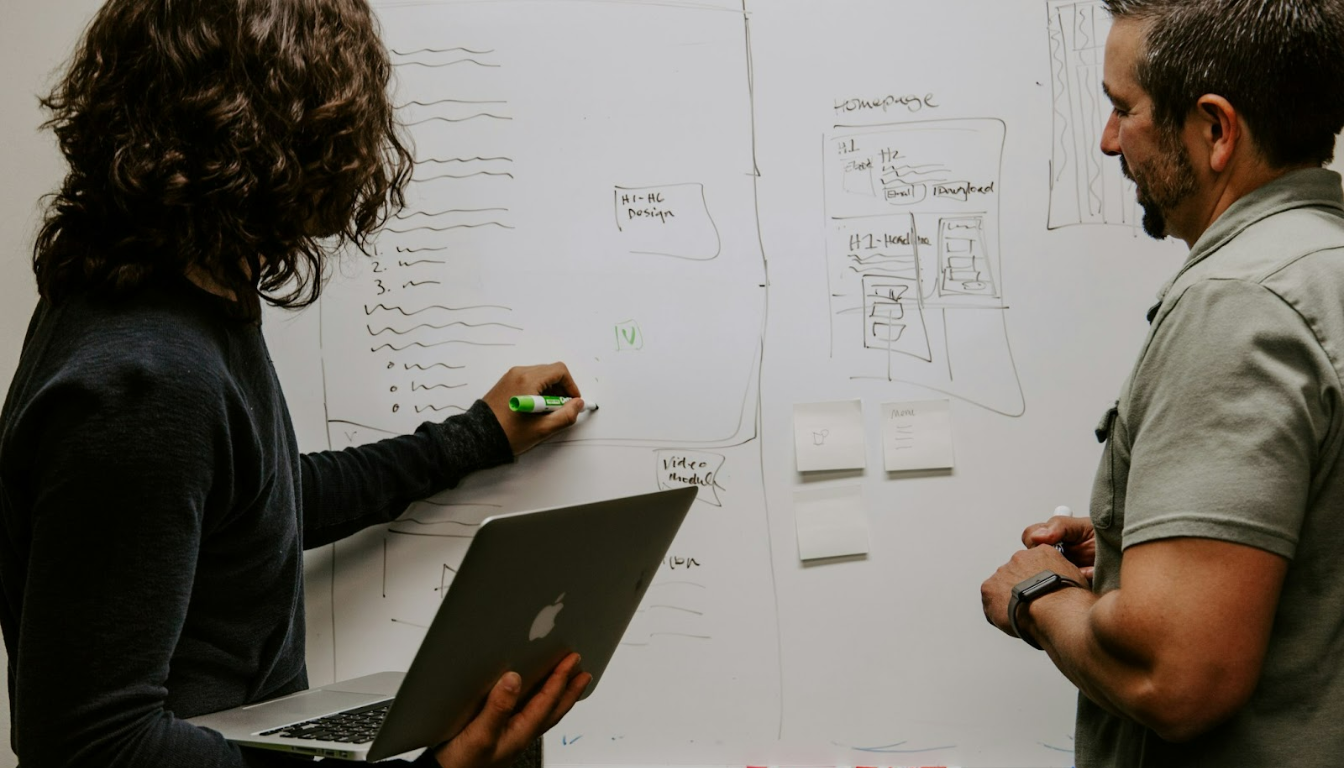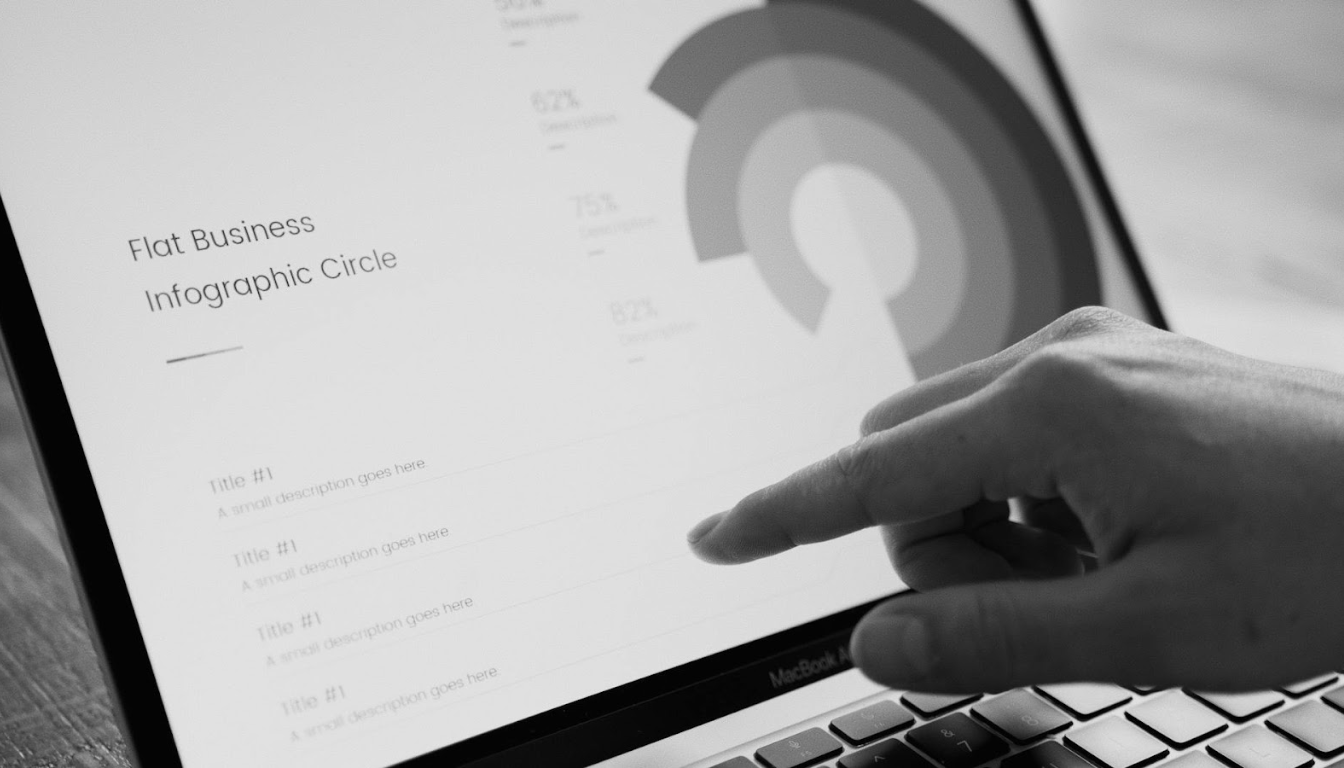Best Team Strategies to Improve Collaboration in the Workplace

Want to boost your team’s collaboration and performance? Discover 10 effective team strategies to help you. This article covers goal setting, communication, trust-building, and more. Improve teamwork and drive success.
Key Takeaways
- Establishing clear team goals using the SMART framework enhances focus, accountability, and alignment with organizational vision.
- Fostering open communication and building trust are essential for collaboration, enabling team members to share ideas, feedback, and support.
- Investing in professional development and leveraging technology strengthens team capabilities and ensures effective collaboration, especially in remote environments.
Establish Clear Team Goals

Clear team goals are the cornerstone of any successful team effort. They:
- Reduce confusion and maintain a shared focus
- Help every team member understand their role and contribution to the team’s success
- Provide direction and clarity when they are specific, measurable, and achievable
- Align team members on tasks and responsibilities, reinforcing the team’s purpose and supporting the team’s mission.
Reviewing and adapting these goals regularly ensures they remain relevant and aligned with the team’s mission. Effective team objectives and their alignment with the broader organizational vision will be discussed next.
Defining Team Objectives
Setting SMART goals—Specific, Measurable, Achievable, Relevant, and Time-bound—is the foundation for defining team objectives. This framework helps in providing tangible criteria for success, thereby enhancing overall work performance. Breaking larger objectives into smaller milestones helps teams evaluate progress, make adjustments, and celebrate achievements.
Assigning specific roles ensures each member understands their responsibilities, promoting structure and accountability. Collaborative goal setting enhances motivation and team dynamics by fostering ownership and commitment.
Aligning Goals with Organizational Vision
Aligning team goals with the organizational vision contributes to overall success. When team members understand the overarching company goals, their efforts are more likely to be cohesive and directed towards a common objective. This alignment connects individual contributions to the bigger picture, enhancing motivation and engagement.
Leadership plays a vital role. Involving leaders in corporate communication and organizing offsite meetings fosters stronger collaboration and goal alignment. These practices improve team performance and ensure that goals remain relevant and achievable.
Foster Open Communication

Open communication is essential for a collaborative team. It prevents misunderstandings, builds trust, and fosters collaboration, improving overall team performance. Encouraging open, two-way communication creates an environment where team members feel valued and understood.
Utilizing effective communication techniques and tools fosters this environment. Various methods for effective communication and digital tools to enhance communication and team collaboration will be explored next.
Techniques for Effective Communication
Effective communication involves active listening, transparency, and a safe environment for feedback. Encouraging team members to share ideas, offer feedback, and discuss challenges openly significantly enhances communication skills and engagement to improve communication. Using regular team meetings, one-on-one discussions, and chat tools accommodates different communication preferences and ensures everyone is heard.
Promoting cultural awareness and understanding within the team is crucial. It helps create an inclusive company culture where everyone feels safe to express unique perspectives, enhancing communication.
Utilizing Communication Tools
In today’s digital workplace, communication tools are indispensable for efficient and secure team communication. Project management platforms, messaging apps, and video conferencing software enhance real-time communication, file sharing, and collaboration. These tools break down barriers and cultivate a culture of open and honest communication.
Leveraging technology improves communication, fosters knowledge sharing, and ensures team members are engaged and aligned with the team’s goals.
Build Trust Within the Team
Trust is the foundation of successful teamwork. It:
- Fosters psychological safety
- Encourages risk-taking, idea sharing, and mutual support
- Increases engagement and confidence when team members feel valued and trusted
- Promotes a positive environment
Consistency and mutual accountability are crucial for building and maintaining trust.
Specific strategies for building and maintaining trust over time to ensure a high-performing team will be explored next.
Strategies for Building Trust
Building trust requires intentional actions and a supportive environment. Key actions include:
- Creating a safe space for feedback to encourage team members to share ideas and concerns openly.
- Holding regular team meetings and maintaining an open-door policy to promote dialogue and transparency.
- Encouraging team members to make decisions independently to foster ownership and accountability.
Team bonding activities and collaborative decision-making enhance trust and enhance teamwork. These activities improve team bonds, encourage openness, and create a culture of value and respect, fostering team cohesion.
Maintaining Trust Over Time
Maintaining trust requires ongoing attention and consistent effort. Key ways to sustain and build trust include:
- Open communication
- Celebrating achievements
- Learning from failures
- Mutual respect
- Involving team members in decision-making to foster ownership and trust
- Promoting autonomy to improve teamwork
Leaders show trust in team members’ abilities and empower team members by delegating responsibilities effectively. These practices ensure strong trust, contributing to successful teamwork and a positive dynamic among team leaders.
Encourage Collaboration and Teamwork

Collaboration is key to effective problem-solving and innovation. It enhances performance by leveraging diverse skill sets and perspectives. Encouraging teamwork and mutual support can facilitate collaboration, fostering a cooperative culture and leading to effective outcomes.
Promoting collaboration and teamwork involves implementing team building strategies for cross-functional teamwork and team building activities. These strategies will be detailed next.
Promoting Cross-Functional Teamwork
Cross-functional teamwork utilizes diverse skill sets from different functions to enhance creativity and innovation. Live collaborative events, team chat tools, and access to project materials are essential for collaboration. Encouraging collaboration across functions enhances team capability and fosters mutual support.
Strategic delegation and knowledge sharing promote cross-functional teamwork. These practices ensure team members can contribute meaningfully and collaborate effectively.
Implementing Team Building Activities
Team building activities align team members and focus their work. Activities like The Marshmallow Challenge, Follow the Leader, and Team Development Day enhance collaboration and communication. Customizing team building exercises to align with team interests, preferences, strengths, and organizational goals ensures maximum engagement and effectiveness.
Considering logistics and timing is important. Organizing participants, activity duration, and regular check-ins maximizes the impact of team building activities.
Promote Diversity and Inclusion

A diverse and inclusive workplace brings perspectives that enhance problem-solving and innovation. Embracing diversity ensures team members feel valued and empowered to contribute unique ideas, leading to better decision-making and team dynamics.
How to create an inclusive workplace and the benefits of diverse teams driving high performance will be explored next.
Creating an Inclusive Workplace
Creating an inclusive workplace requires intentional actions beyond policies. Actively recruiting and retaining diverse talent brings a wealth of ideas and experiences. Honoring different cultural and religious practices contributes to an inclusive environment where everyone feels respected and valued.
These practices foster a collaborative environment where team members work engaged and motivated, which encourages team members and other team members to promote collaboration and encourage teams, leading to successful teamwork and the team’s work, ultimately contributing to employee engagement and the team’s success and collective success.
Benefits of Diverse Teams
Diverse teams are more likely to produce innovative solutions due to their wide-ranging perspectives, especially when supported by a strong team of new team members and strong teams. The variety of viewpoints leads to thorough discussions and better decision-making, essential for navigating complex challenges through creative problem solving and creative solutions, benefiting the entire team and encouraging creativity, including contributions from individual team members. Effective teams thrive in such environments.
Embracing diversity enhances innovation and decision-making capabilities within teams, contributing to overall organizational success.
Provide Regular Feedback and Recognition
Regular feedback and recognition maintain team motivation and improve performance. Constructive feedback reveals strengths and areas needing improvement, while positive reinforcement boosts morale and encourages high performance. Balancing feedback and recognition keeps team members engaged, motivated, and focused.
How to deliver constructive feedback effectively and recognize team achievements to foster a positive environment will be explored next.
Delivering Constructive Feedback
Constructive feedback is crucial for individual growth and team dynamics. Regular evaluation of team performance enhances engagement and accountability. Timely feedback should be specific, actionable, and supportive to promote improvement.
This approach ensures feedback is received positively, leading to meaningful changes in performance and dynamics.
Recognizing Team Achievements
Recognizing individual and team achievements builds trust and maintains high morale. Effective recognition programs:
- Foster belonging and commitment
- Ensure team members feel valued and appreciated
- Celebrating successes and enhancing employee satisfaction should be fair, consistent, and aligned with team values to be impactful.
Peer-to-peer recognition is crucial. Encouraging team members to acknowledge each other’s efforts creates a supportive and collaborative environment. Leaders can enhance recognition by providing tools like an employee app, ensuring all team members are celebrated for their efforts.
Invest in Professional Development
Investing in professional development fosters a culture of continuous learning and capability expansion. Continuous learning enhances performance, prepares team members for future roles, and boosts adaptability and resilience. Mentorship helps team members enhance capabilities and navigate challenges, contributing to overall success.
How to identify skill gaps and encourage continuous learning for ongoing development will be discussed next.
Identifying Skill Gaps
Regular evaluations pinpoint specific skills needing improvement within a team. These evaluations help in identifying areas where team members excel and where they require additional training. Effective training should be customized to address the specific skill deficits that have been identified, ensuring that the training is relevant and impactful.
By regularly assessing skill gaps, teams can stay ahead of industry changes and remain competitive, fostering a culture of continuous improvement and professional development.
Encouraging Continuous Learning
Encouraging continuous learning involves:
- Promoting a culture where team members are motivated to expand their knowledge and skills.
- Implementing mentorship programs that build strong, trust-based relationships and promote cross-functional collaboration.
- Offering tailored training programs, workshops, and learning modules to effectively address identified skill gaps and enhance individual and team performance.
Team-based learning experiences enhance unity, shared purpose, and improve teamwork skills, ensuring that the team project remains dynamic and innovative. These practices contribute to a motivated workforce that is equipped to handle new challenges and opportunities.
Leverage Technology for Team Collaboration
In today’s increasingly digital workplace, leveraging technology is essential for enhancing team collaboration, especially for remote teams. Open communication and structured project management are key for aligning employees with company goals. Utilizing tools like Microsoft Teams can help organize teams and channels, facilitating structured communication and project management.
The subsections below will explore how collaborative software tools and practices can improve remote team collaboration and overall team effectiveness.
Collaborative Software Tools
Collaborative software tools enable teams to effectively communicate and manage tasks in a digital environment. These tools provide real-time communication, file sharing, and co-authoring capabilities, mimicking the collaborative nature of in-person teamwork. By organizing information and facilitating dialogue, these tools enhance project management efficiency and team coordination.
The adoption of collaborative software leads to improved knowledge sharing and stronger team dynamics, ensuring that teams can work seamlessly and productively.
Remote Team Collaboration
Remote team collaboration requires continuous effort to maintain trust and effective communication. Open and honest communication is crucial for preventing misunderstandings and fostering collaboration. Encouraging active listening, empathy, and clarity in both verbal and written communication can significantly enhance remote teamwork.
Leveraging project management platforms, messaging apps, and video conferencing software facilitates communication and collaboration within remote teams. Promoting open communication, celebrating achievements, and fostering mutual respect are essential practices for building trust and ensuring a successful remote team dynamic.
Adapt Leadership Styles to Team Needs
Effective leadership is crucial for meeting the evolving needs of the team. Adaptability ensures that leadership approaches align with the specific context of the team’s challenges, fostering a culture of collaboration, productivity, and accountability. Understanding different leadership styles and their impact on team dynamics is essential for effective team building.
The following subsections will explore the importance of understanding various leadership styles and the role of leaders in setting the tone for team behavior.
Understanding Different Leadership Styles
Understanding different leadership styles is crucial for fostering collaboration, productivity, and accountability within teams. Strong leaders can significantly influence team culture by fostering a culture of accountability and recognizing contributions. However, micromanaging during team activities can negatively impact team dynamics and hinder performance.
Leaders must adapt their styles to the unique composition and needs of their teams, ensuring that their approach supports the team’s goals and challenges.
Leading by Example
Leaders set the tone for behavior within a team by modeling expected actions. A leader’s behavior directly influences team dynamics, setting expectations for team conduct and fostering a positive team culture. Approachable leaders create an environment where team members feel safe to communicate openly, enhancing team collaboration.
Effective leadership involves supporting team members’ growth through mentorship and guidance, ensuring that the team leader remains motivated and engaged.
Monitor and Adjust Team Strategies

Regular assessment and flexibility in strategy implementation are vital for adapting to changes in team performance and organizational goals. Monitoring and adjusting strategies helps identify achievements and areas needing improvement, ensuring that team efforts remain aligned with objectives. Timely feedback promotes accountability and helps individuals align their efforts with team goals.
The following subsections will discuss the importance of performance assessments and the need for flexibility in implementing team strategies.
Performance Assessments
Regular performance evaluations are essential for identifying improvement areas and enhancing team effectiveness. Key aspects include:
- Utilizing clear metrics to identify areas where team members excel or require improvement, allowing for targeted training and development.
- Maintaining flexibility in strategy to pivot toward more successful practices based on current results.
- Ensuring continuous improvement through ongoing assessment and adaptation.
Implementing regular check-ins allows for timely adjustments to strategies, ensuring that the team remains on track to achieve its goals.
Flexibility in Strategy Implementation
Ongoing evaluation and flexibility are necessary for effective team strategy implementation. Being responsive to changing circumstances and feedback ensures that team strategies remain relevant and effective. Regular evaluation of team dynamics allows leaders to make informed decisions on refining or overhauling strategies, fostering a culture of resilience, innovation, and continuous growth within the team’s effectiveness.
Summary
Improving collaboration in the workplace requires a multifaceted approach. Establishing clear goals, fostering open communication, building trust, encouraging collaboration, promoting diversity and inclusion, providing regular feedback and recognition, investing in professional development, leveraging technology, adapting leadership styles, and monitoring and adjusting strategies are all crucial elements. Platforms like Offsite make it easier for teams to put these principles into action—offering curated experiences and tools that help build alignment, connection, and momentum across distributed teams. By implementing these strategies, teams can enhance their effectiveness, foster innovation, and achieve long-term success.
Remember, the journey to building a strong, collaborative team is ongoing. Continuously applying these strategies will help you navigate the challenges and opportunities that come with teamwork, ultimately leading to a more dynamic and productive work environment.
FAQs
- Why are clear team goals important for collaboration?
Clear team goals are crucial for collaboration as they minimize confusion and keep everyone aligned on shared objectives, ensuring that each member understands their role in achieving team success
- How can open communication improve teamwork?
Open communication enhances teamwork by preventing misunderstandings and building trust, ultimately fostering collaboration that is vital for improved team performance.
- What are some effective team building activities to enhance collaboration?
Engaging in team building activities like the Marshmallow Challenge and Follow the Leader significantly enhances collaboration and communication among team members. These activities foster alignment and focus, leading to stronger teamwork.
- How does diversity benefit a team?
Diversity significantly benefits a team by offering varied perspectives that enhance creativity and improve problem-solving. This leads to more comprehensive discussions, better decision-making, and innovative solutions.
You may also like
Unique spaces for your next offsite
Find distinctive venues for your upcoming corporate retreat.
Stay Updated with Our Insights
Get exclusive content and valuable updates directly to you.







